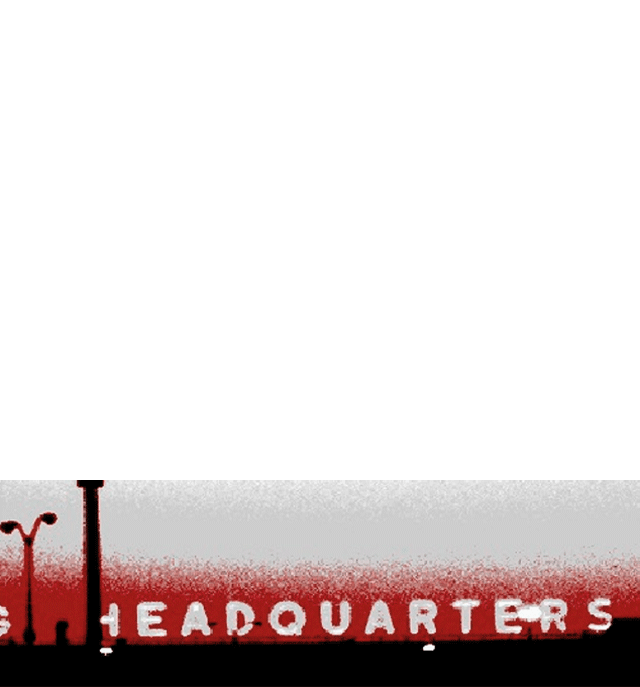first things first
archive: review-first things first: first things first:
the men in the mirror, recent thoughts on some old ideas
by david carson, usa
note: this piece was orginally submitted as requested to adbusters magazine.they refused to publish it saying:
“The point of the manifesto was not to hold up 33 shining examples to the design world, but to stimulate much-needed debate,……”
go figure-dc
” First Things First” is a reasonable, common sense approach to looking at the work graphic designers do. it offers some good advice for young designers: Don’t sell your soul to the devil; listen to your conscience; Find ways to help make the world a better place. Don’t waste your talents helping sell people things they don’t need. And while the original document rallied against the evils of doing design for “toothpaste” and “after shave lotion”, I would today add such categories as racism, domestic violence, cigarette smoking, and guns as worthy examples of areas to avoid promoting.
Any document signed by Irma Boom is worthy of serious consideration. She embodies the heart and soul of the MANIFESTO. Some of the other signers are more suspect. And there are a surprising number of non-designers who have attached themselves to the ‘new’ document. with so many of the signees having made their living thru various forms of advertising, the overriding message of the new MANIFESTO seems to be one of hypocrisy.
Interestingly the list of defectors continues to grow. one prominent head of a design school recently told me she “wished i had never signed that thing”, and said had she read it more carefully, she would not have signed. I was told the same thing from an educator/lecturer in england just this month.
Th new MANIFESTO was spearheaded by a designer who reportedly made millions of dollars “doing advertising”. the list also includes a designer of a glossy women’s fashion magazine, as well as a museum curator whose colleagues told me was able to build himself a new house from “all the money he made from advertising”.
Rudy Vanderlans comes closer than most to actually living and representing the ideas expressed in the Second First Things First. He’s also one of the few designers who excels both at writing AND designing. The value to the world, however, in selling typefaces and sending unsolicited graphic design magazines thru the mail, is unclear.
freelance writer Rick Poyner was brought in to help “redraft the original” manifesto. Poyner has been described as a “design connoisseur” by fellow British writer william owens, as well as “the ultimate design groupie” by Neville Brody. Either way, Poyner is a clever and skilled writer, and as good a choice as any to help to rewrite any original document. It is troubling that Poyner uses his considerable writing talents only to address a multitude of ‘graphic design’ issues, including letting us know about typography now, and interviewing famous graphic designers. Why not take the message of the original MANIFESTO to heart and write about “the things that really matter”. perhaps addressing some of England’s numerous social problems could be a good place to start. Poyner continues to point out how much press his ftf gets, while seemingly generating the majority of it himself.
Historian Steven Heller, though not as talented a writer as Poyner, is nonetheless the most prolific. Heller chooses to write books about “Newsletters Now”, and “What the Best Dressed Books and Magazine Covers are Wearing”. The original MANIFESTO rallies against work that “contributes little or nothing to our national prosperity”. With Heller’s love of the written word, and his many connections in the publishing field, perhaps more important topics could be addressed in future books. hellar did attempt this with his recent ‘swasticka’ book, but it was critically panned. the highly respected british magazine things, in a lengthy review said “Heller is part of a group trying selectively to retain one view of how the worlds morals should shape up…”
If writers are going to call on designers to aspire to loftier goals, is it too much to ask the same of writers? Design solves design problems, and if it must be judged, should be judged accordingly. There are organizations, institutes, clubs, etc., already set up to deal with a multitude of important social, economic and political issues. True change comes from the bottom up. Sometimes designers can help. Sometimes not. But the idea of an elite, select few, chosen under questionable guidelines, telling the ‘masses’ what they ‘should’ be doing, never rings true or instigates fundamental change.
Students or professionals considering the MANIFESTO would be well advised to look closely at the people who signed up for the second go ’round. Spend some time with Max Brusima. Really listen to Erik Speakerman. Sit through a two hour advertising portfolio presentation by Jonathan Barnbrook (like the one he recently gave in Bremen, Germany). if these folks, or any of the others, represent what graphic design is to YOU, then, by all means, jump on board.
A majority of the original signers of the First Things First, have had little or no lasting impact on graphic design. Or in making the world a better place. Surprisingly few of the names from the 1964 list are recognizable to design professionals, students or professors today. And while the list contains some outstanding individuals, with few exceptions, they were not people who made a difference. Sometimes history has a funny way of repeating itself.
the men in the mirror, recent thoughts on some old ideas
by david carson, usa
note: this piece was orginally submitted as requested to adbusters magazine.they refused to publish it saying:
“The point of the manifesto was not to hold up 33 shining examples to the design world, but to stimulate much-needed debate,……”
go figure-dc
” First Things First” is a reasonable, common sense approach to looking at the work graphic designers do. it offers some good advice for young designers: Don’t sell your soul to the devil; listen to your conscience; Find ways to help make the world a better place. Don’t waste your talents helping sell people things they don’t need. And while the original document rallied against the evils of doing design for “toothpaste” and “after shave lotion”, I would today add such categories as racism, domestic violence, cigarette smoking, and guns as worthy examples of areas to avoid promoting.
Any document signed by Irma Boom is worthy of serious consideration. She embodies the heart and soul of the MANIFESTO. Some of the other signers are more suspect. And there are a surprising number of non-designers who have attached themselves to the ‘new’ document. with so many of the signees having made their living thru various forms of advertising, the overriding message of the new MANIFESTO seems to be one of hypocrisy.
Interestingly the list of defectors continues to grow. one prominent head of a design school recently told me she “wished i had never signed that thing”, and said had she read it more carefully, she would not have signed. I was told the same thing from an educator/lecturer in england just this month.
Th new MANIFESTO was spearheaded by a designer who reportedly made millions of dollars “doing advertising”. the list also includes a designer of a glossy women’s fashion magazine, as well as a museum curator whose colleagues told me was able to build himself a new house from “all the money he made from advertising”.
Rudy Vanderlans comes closer than most to actually living and representing the ideas expressed in the Second First Things First. He’s also one of the few designers who excels both at writing AND designing. The value to the world, however, in selling typefaces and sending unsolicited graphic design magazines thru the mail, is unclear.
freelance writer Rick Poyner was brought in to help “redraft the original” manifesto. Poyner has been described as a “design connoisseur” by fellow British writer william owens, as well as “the ultimate design groupie” by Neville Brody. Either way, Poyner is a clever and skilled writer, and as good a choice as any to help to rewrite any original document. It is troubling that Poyner uses his considerable writing talents only to address a multitude of ‘graphic design’ issues, including letting us know about typography now, and interviewing famous graphic designers. Why not take the message of the original MANIFESTO to heart and write about “the things that really matter”. perhaps addressing some of England’s numerous social problems could be a good place to start. Poyner continues to point out how much press his ftf gets, while seemingly generating the majority of it himself.
Historian Steven Heller, though not as talented a writer as Poyner, is nonetheless the most prolific. Heller chooses to write books about “Newsletters Now”, and “What the Best Dressed Books and Magazine Covers are Wearing”. The original MANIFESTO rallies against work that “contributes little or nothing to our national prosperity”. With Heller’s love of the written word, and his many connections in the publishing field, perhaps more important topics could be addressed in future books. hellar did attempt this with his recent ‘swasticka’ book, but it was critically panned. the highly respected british magazine things, in a lengthy review said “Heller is part of a group trying selectively to retain one view of how the worlds morals should shape up…”
If writers are going to call on designers to aspire to loftier goals, is it too much to ask the same of writers? Design solves design problems, and if it must be judged, should be judged accordingly. There are organizations, institutes, clubs, etc., already set up to deal with a multitude of important social, economic and political issues. True change comes from the bottom up. Sometimes designers can help. Sometimes not. But the idea of an elite, select few, chosen under questionable guidelines, telling the ‘masses’ what they ‘should’ be doing, never rings true or instigates fundamental change.
Students or professionals considering the MANIFESTO would be well advised to look closely at the people who signed up for the second go ’round. Spend some time with Max Brusima. Really listen to Erik Speakerman. Sit through a two hour advertising portfolio presentation by Jonathan Barnbrook (like the one he recently gave in Bremen, Germany). if these folks, or any of the others, represent what graphic design is to YOU, then, by all means, jump on board.
A majority of the original signers of the First Things First, have had little or no lasting impact on graphic design. Or in making the world a better place. Surprisingly few of the names from the 1964 list are recognizable to design professionals, students or professors today. And while the list contains some outstanding individuals, with few exceptions, they were not people who made a difference. Sometimes history has a funny way of repeating itself.







